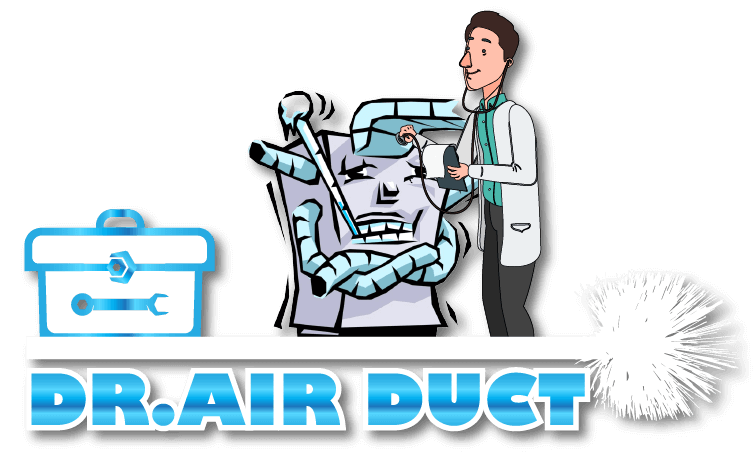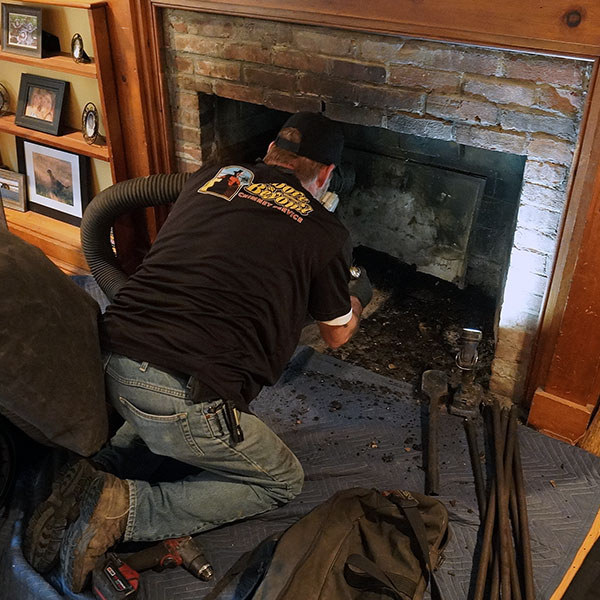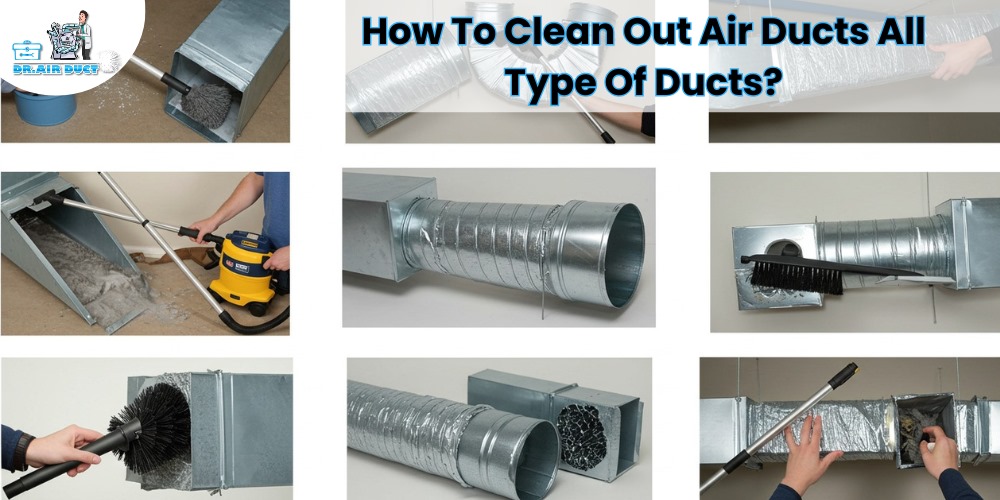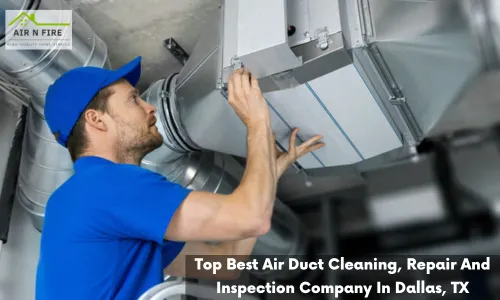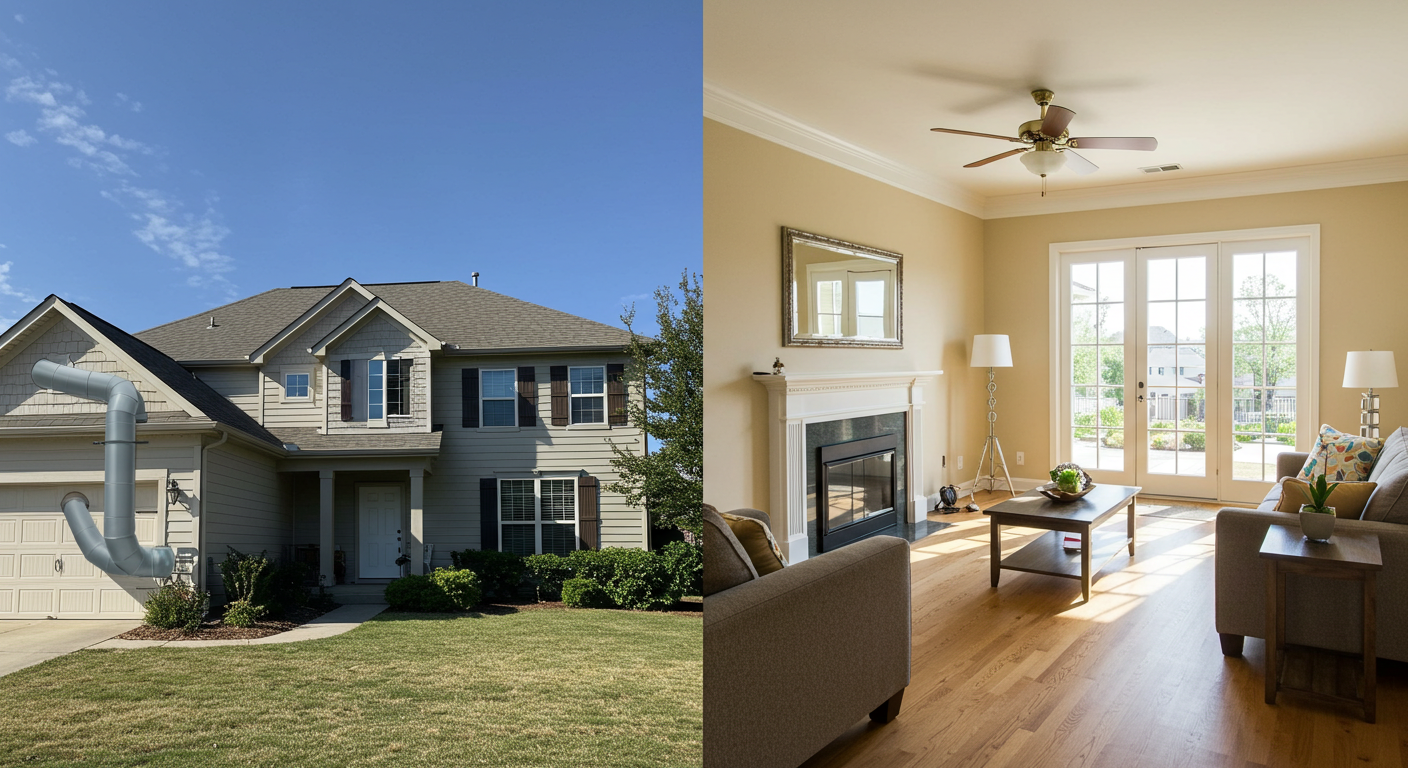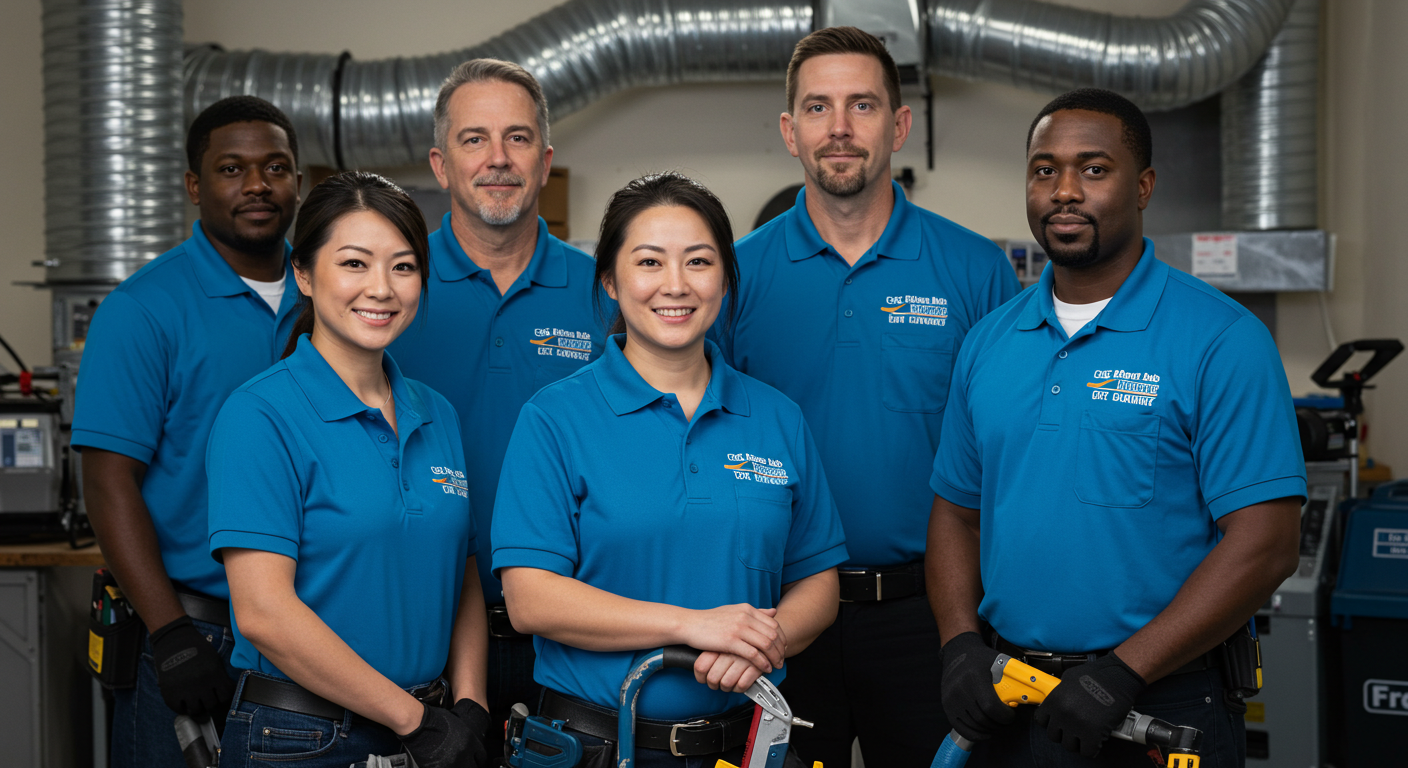A clean chimney is not just a beauty feature but is necessary to ensure good health and clean air in your home. Moreover, you should clean a chimney to maintain a safe and efficient fireplace. Over time, soot and creosote buildup inside the chimney increases the risk of fire and reduces airflow.
All homeowners must understand how to clean chimney properly as it ensures a safer and more efficient home heating system. We will discuss the best way to clean the chimney, various chimney-cleaning DIY methods, and why professional services might be beneficial.
How To Clean Chimney? Step By Step Guide
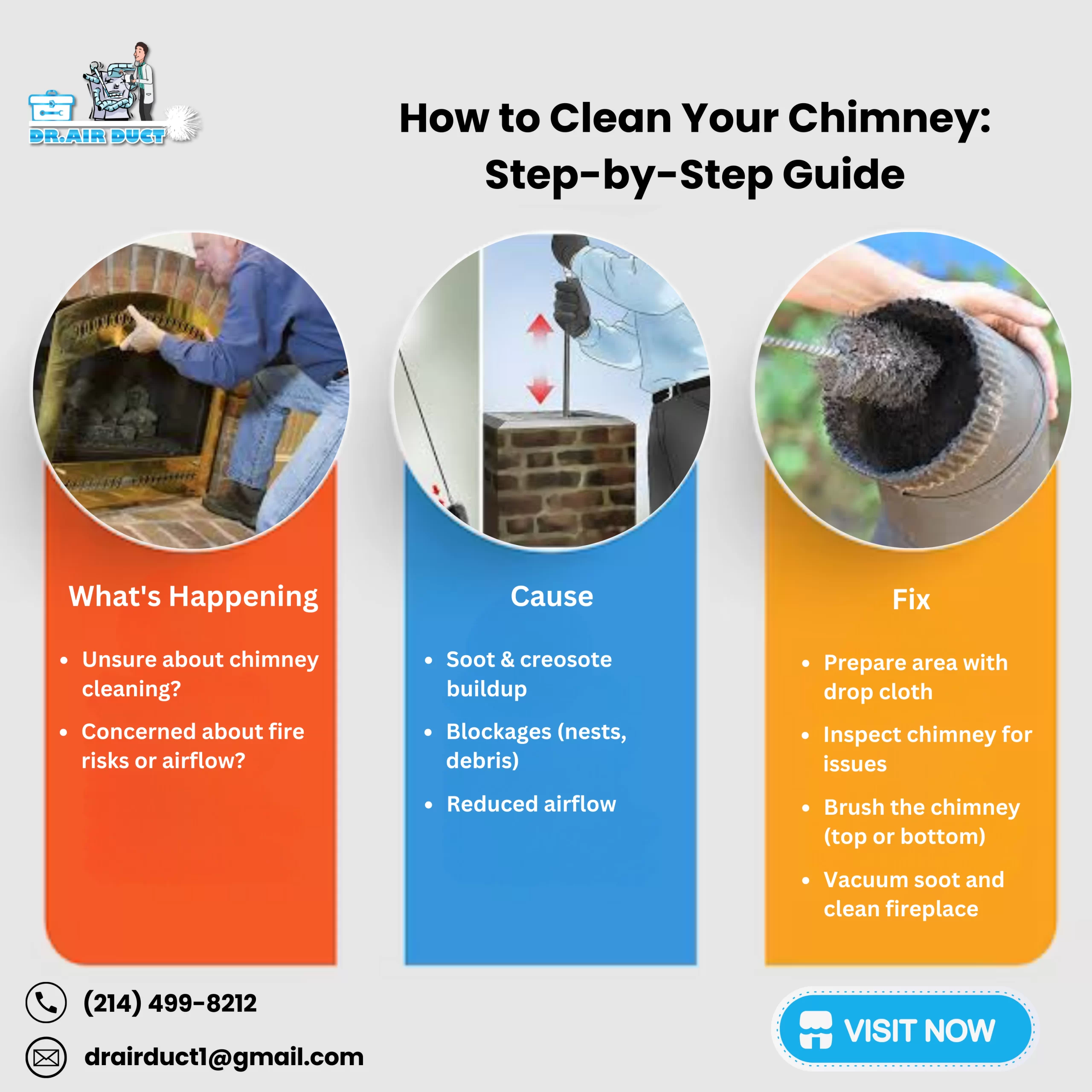
If you are wondering how to do chimney cleaning, here are some steps that would be beneficial for you to understand and follow:
Step 1: Gather Your Tools
All homeowners must know how to work around their homes to ensure a perfect living environment. Before you start cleaning the chimney, gather a few essential tools that will ensure a good job. You will need a stove pipe brush, 6 chimney brush, chimney brush rod safety goggles and gloves. You must also keep a dust mask, drop cloth and a vacuum cleaner with you.
Step 2: Prepare The Area
Make sure that the area around the fireplace is properly covered and safe from dirt and mess that could spoil the carpet or flooring. Lay down drop cloth around the fireplace to catch debris, and wear protective gear to prevent inhaling soot.
Step 3: Inspect The Chimney
When the area is ready, you must check the chimney to see how much cleaning is required. Check for blockages like bird nests, creosote buildup, or structural issues, which can enter the chimney if cleaning is not done properly. Use a flashlight to inspect deep areas so the cleaning can be done correctly.
Step 4: Brushing The Chimney
When cleaning from the top, use a chimney brush rod attached to the stove pipe brush. Insert it into the chimney and move it up and down to loosen the soot. If cleaning a chimney from the bottom, use the same technique but start from the fireplace opening.
Step 5: Vacuum and Clean The Fireplace
After brushing, you can use a vacuum to remove dislodged soot. This step ensures that all the debris and soot vanish and leave a cleaner chimney shaft. Wipe the fireplace walls with a damp cloth to remove any fine soot that clings to the concrete.
Types Of Chimney Cleaning Methods
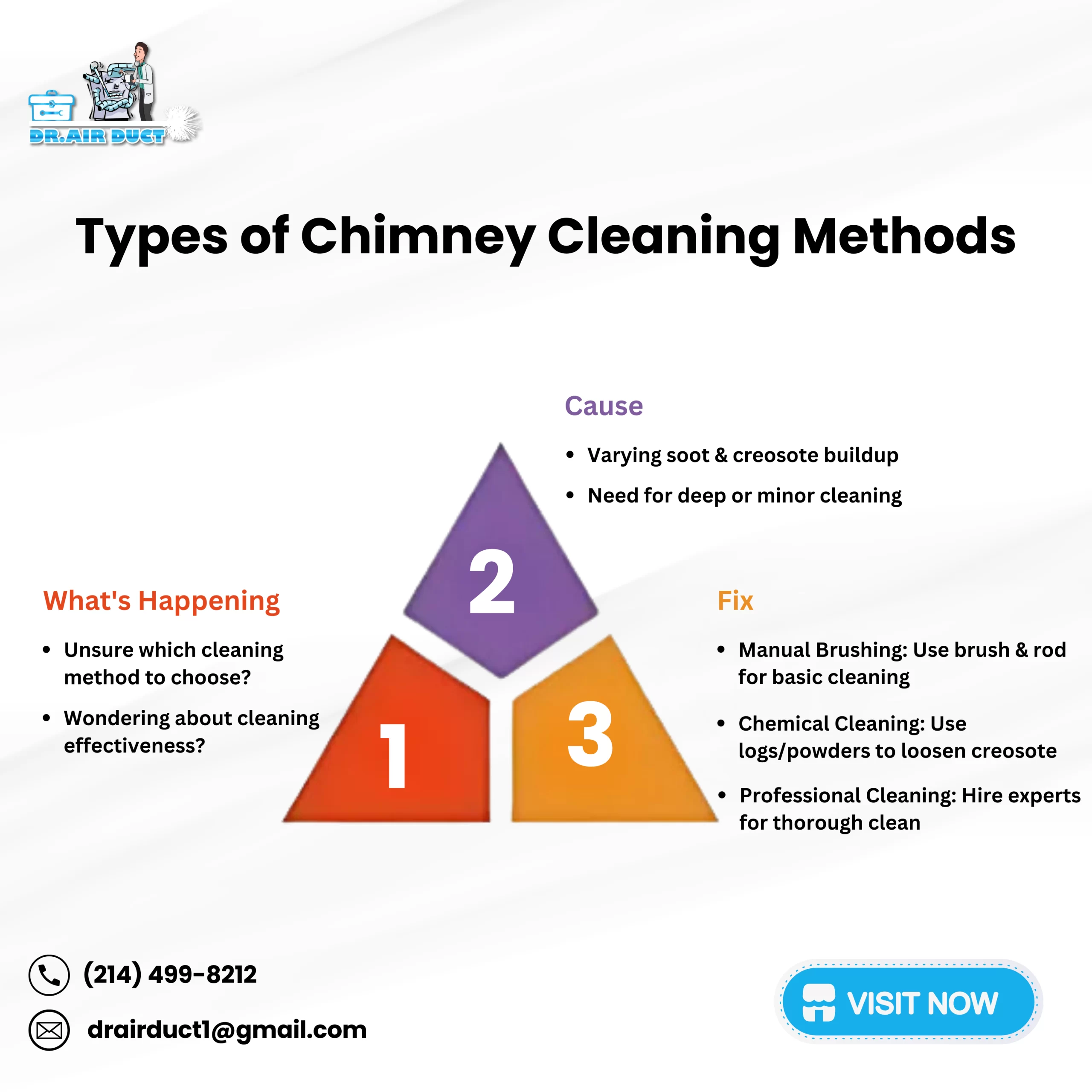
There are several methods to ensure effective chimney flue cleaning. Some of these methods involve manual brushing, which involves using a chimney brush rod and stove pipe brush, to scrub the interior walls. This cleaning method is quite common and can be done by anyone. Another method is rotary cleaning, which is done by attaching a power drill to a spinning brush for deep cleaning. This method will be more effective as the drilling movement will give the attached brush a powerful cleaning ability. It loosens the soot and removes any obstruction without too much human power.
Chemical cleaning involves using logs or powders to loosen creosote and remove it with a brush and damp cloth.
Lastly, professional cleaning is a good option because you can hire experts for a thorough sweep. You can use these methods to clean the chimney and keep it working efficiently. You can clean it manually if there is very little soot and creosote build-up. On the contrary, if you have not cleaned the house for a long time and the chimney is not working, professional help will be required.
Benefits Of Cleaning Chimney
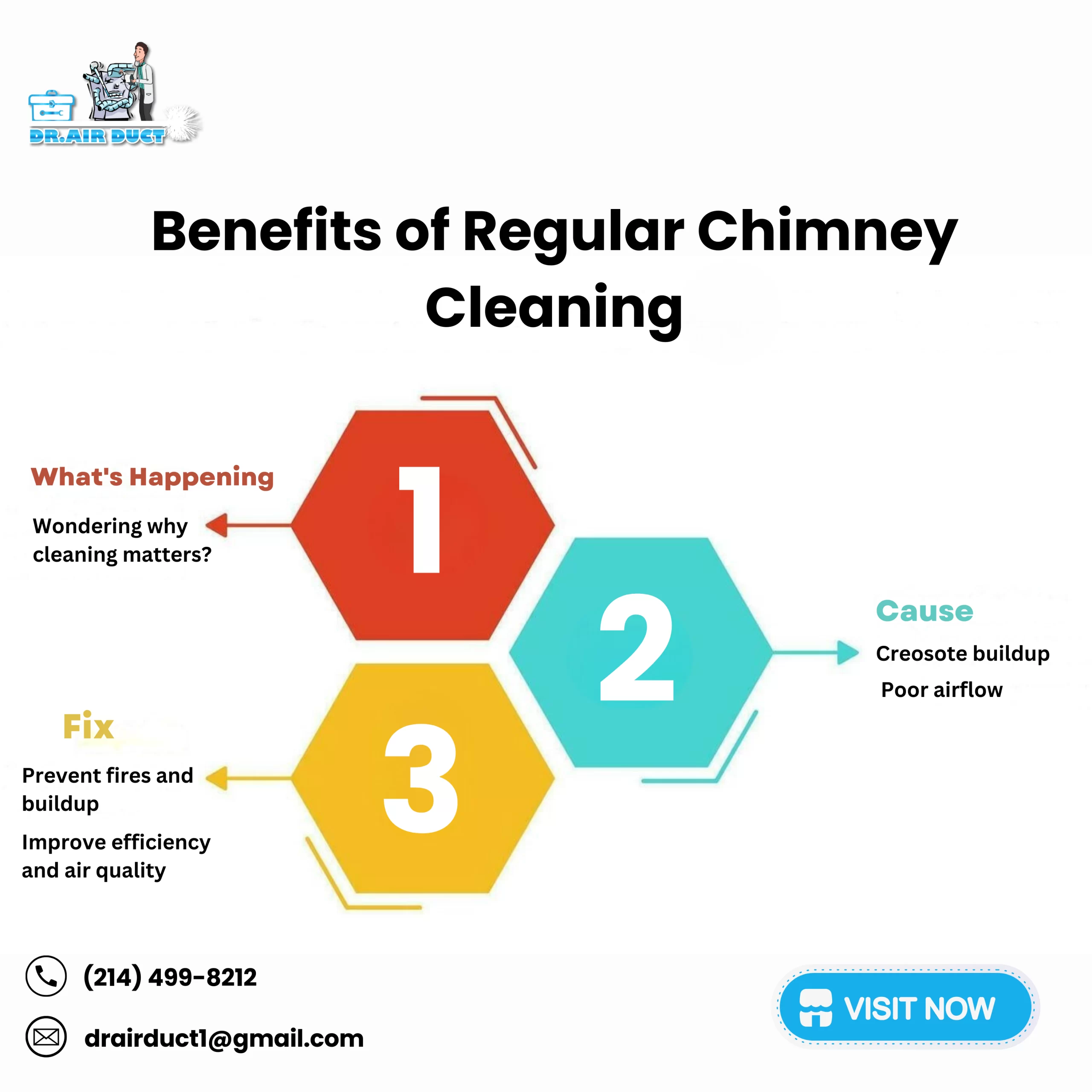
A regular chimney cleaning DIY or getting professional maintenance provides many benefits for your home and your family. Some of these benefits are:
- Reduces Fire Risk: A clean chimney means no creosote buildup, a major cause of chimney fires.
- Improves Efficiency: Another benefit of cleaning chimneys regularly is allowing better airflow. A clean fireplace chimney means better air quality in the house.
- Enhances Air Quality: As mentioned earlier, air quality is essential for the family. Cleaning reduces smoke and harmful toxins in your home.
- Extends Chimney Lifespan: Regularly cleaning the chimney will prevent corrosion and structural damage, ensuring your fireplace works well and keeps the home warm and comfortable.
Can I Clean My Chimney Myself?
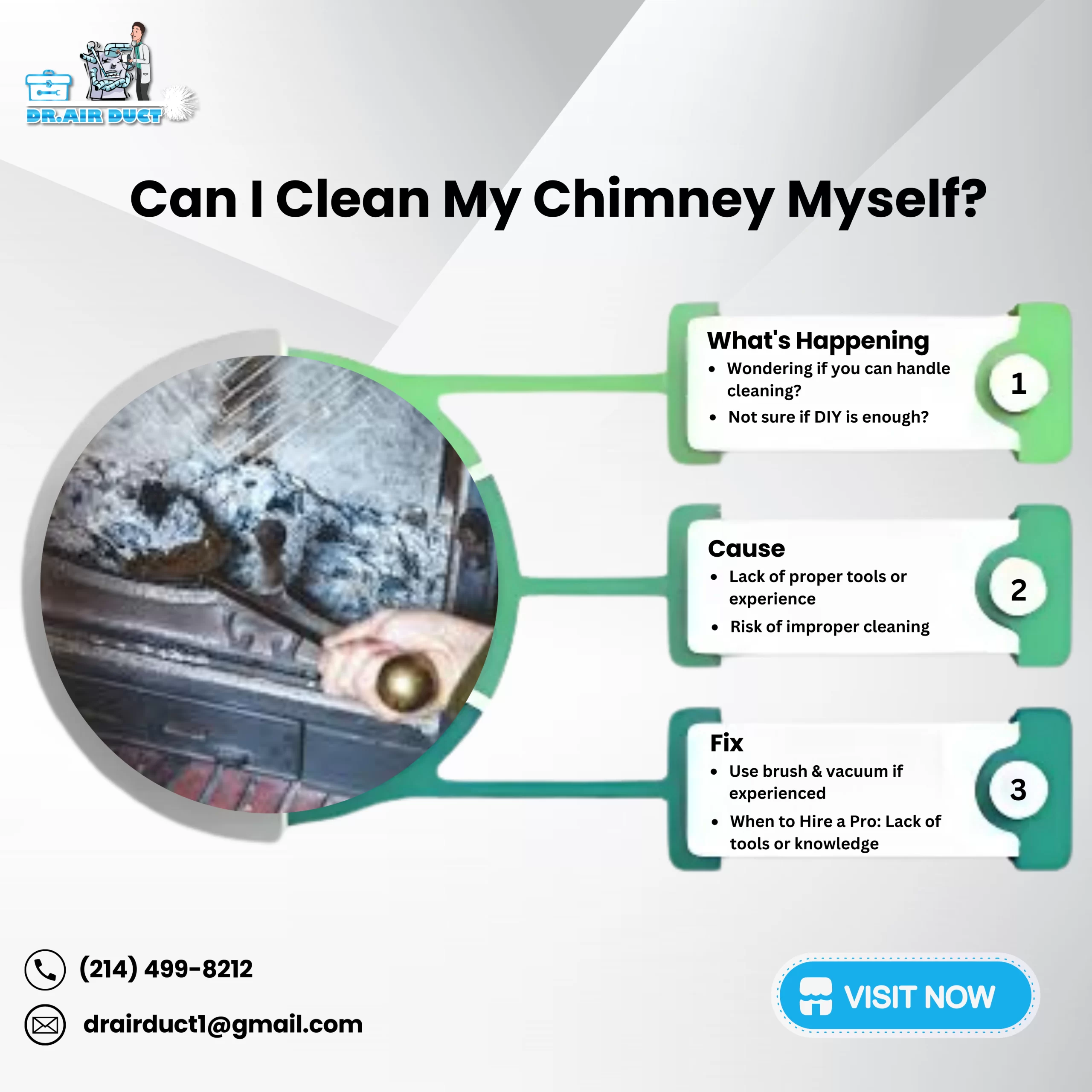
Many homeowners like to ask if they can do chimney cleaning with the right tools and safety precautions. You must be careful when working on chimneys, and it is necessary for you to understand how to clean a chimney by yourself.
If you are unsure how to clean chimney from the inside or lack proper equipment, hiring professionals will be better for you. How to clean a chimney without a brush? Use a vacuum or chemical cleaner, but brushing is more effective as it allows the soot to loosen up and ensures a cleaner shaft from the inside.
Hire Dr. Air Duct For Professional Chimney Cleaning
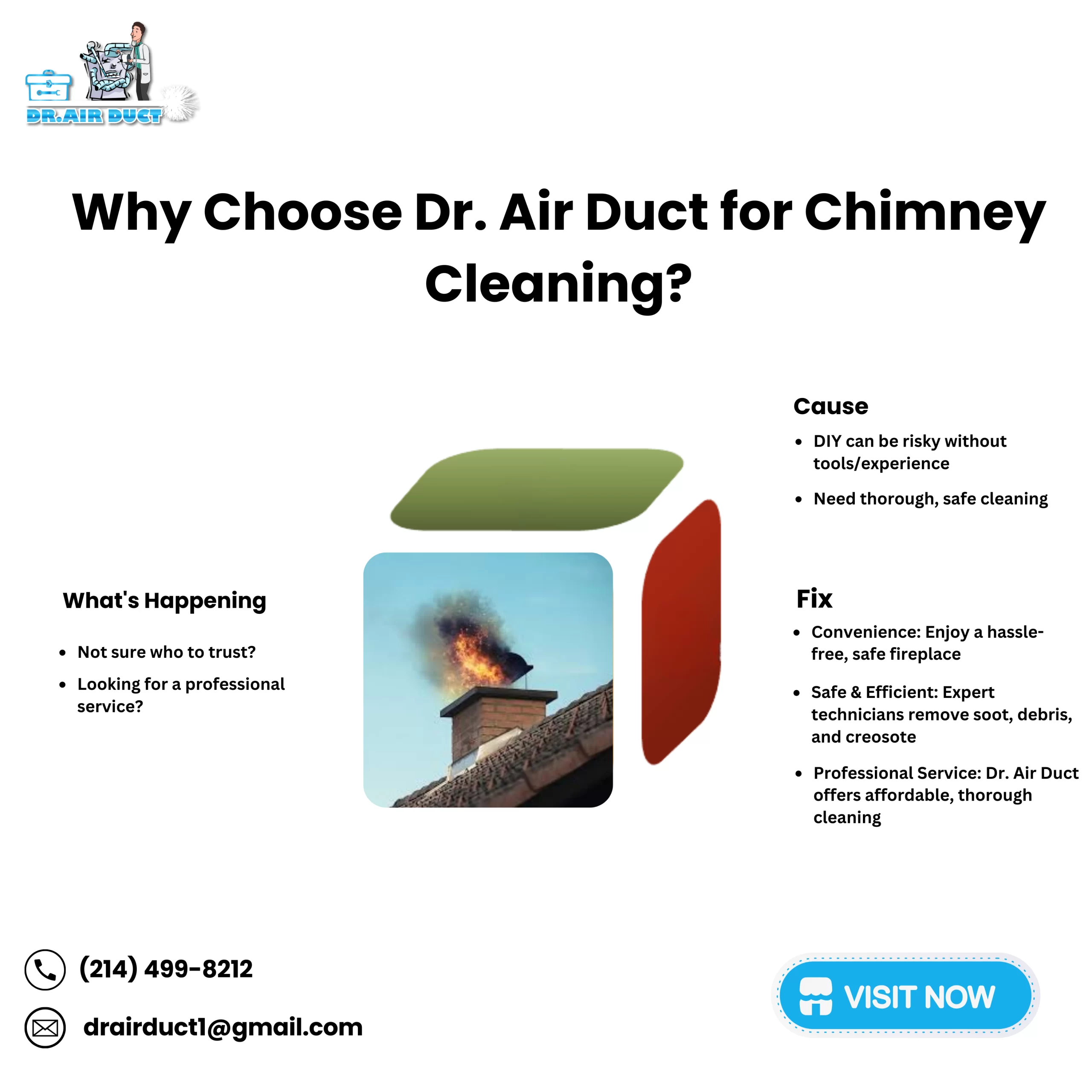
For a hassle-free experience, consider hiring Dr. Air Duct. Their team provides professional services for cleaning fireplace chimney, and there is a clutter-free, clean, and healthier finish as your chimney will work efficiently and your home will remain safe.
Dr. Air Duct has the most economical and efficient services for getting all kinds of debris, soot, and creosote out of the chimney. You can call them today and schedule a meeting for more details.
FAQs
1. How often should I clean my chimney?
It’s recommended to clean your chimney at least once a year, or more frequently if you use your fireplace regularly. Annual cleaning prevents creosote buildup and keeps your chimney safe and efficient.
2. What tools do I need to clean a chimney?
Essential tools for cleaning a chimney include a stove pipe brush, chimney brush rod, safety goggles, gloves, a dust mask, a drop cloth, and a vacuum cleaner to remove soot and debris.
3. Can I clean my chimney myself?
Yes, with the right tools and safety precautions, you can clean your chimney yourself. However, if there’s significant buildup or structural damage, it’s best to hire a professional for a thorough cleaning.
4. What is the best method for cleaning a chimney?
The best method depends on the chimney’s condition. Manual brushing works for light buildup, while rotary cleaning and chemical cleaning are better for heavy soot or creosote buildup. Professional services provide the most thorough cleaning.
5. How can chimney cleaning improve air quality?
Regular chimney cleaning enhances airflow, reduces the accumulation of harmful toxins and smoke, and ensures that your fireplace operates efficiently, all of which contribute to better indoor air quality.
